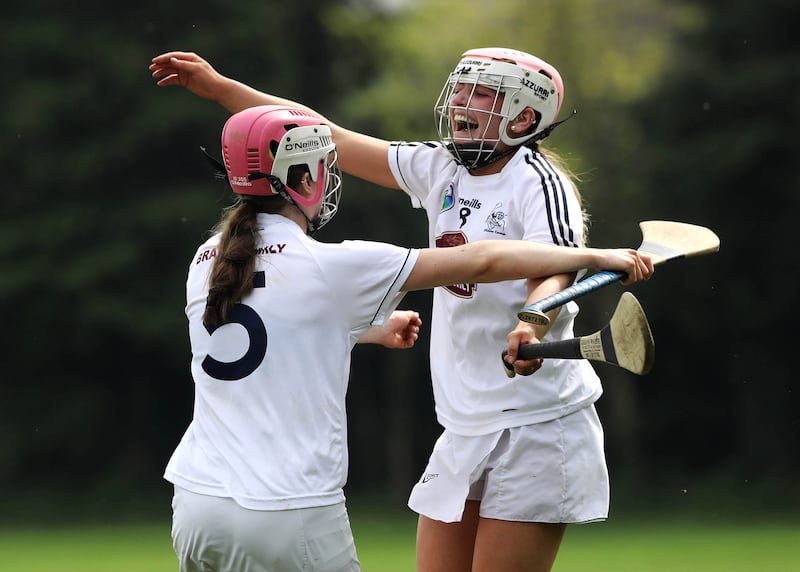The Kildare hurling and Gaelic football teams are winless and pointless after two rounds of the league.
Their camogie county board decided against entering a team in last year’s intermediate championship, and the women’s football county board executive resigned en masse last week. Other than that, Mrs Lincoln, did you enjoy the play?
There is a long list of problems in Gaelic games that seem almost insurmountable to many counties. Emigration, a lack of locally-based companies willing to invest in club and county teams, no presence in big urban areas, no history of success, dwindling populations.
Teams on the western seaboard in particular have to spend huge amounts on expenses for players just to get them home from Dublin for training, which doesn’t cover the personal strain on every player who isn’t getting the recovery time they need after every training session.
Kildare have none of those problems. So what exactly is going on here?
The resignations from their LGFA executive (notwithstanding a 17-game winning run for their senior team) over funding issues were noteworthy enough this week, before we read that their men’s football manager Glenn Ryan had been read the riot act by his own county board over recent results.
Kildare GAA chairman Mick Gorman was speaking at a county board meeting on Monday night and made clear that recent results will not be tolerated for much longer, in quotes first carried by the Leinster Leader.
“I spoke to the management for a long time today about the situation and the necessity that performances and results have to greatly improve. We are fully aware that results are not good enough, not good enough for the county, and the players and the management are all fully aware of the situation.
“It is not that everyone isn’t fully focused on the thing, but the results speak for themselves.”
No one is saying the Kildare football team is immune from criticism, but surely the responsibility here is shared around. The county board hired the guy, the management committee of the county board recommended Ryan be given a third year last autumn ... and it’s now February. “Unhelpful” is a word, and a charitable one at that.
Glenn Ryan’s time in charge of Kildare has been far from spectacular but it is about par for Kildare managers this century.
He lost a Leinster semi-final by two points to Dublin last year which constitutes, by a distance, Kildare’s best performance against Dublin in a long time. The win over Roscommon in the All-Ireland group stages might have been the most fun a Kildare supporter has had in years. There is something there.
Kildare are the reigning under-20 All-Ireland champions. They won that title in 2018 as well, and lost the 2022 final. It is inarguable that they have talent coming through. And this has not been a recent uptick – they’ve been pretty much as good as Dublin for the last 10 years at minor and u-21/20.

In the last 10 years, Dublin and Kildare have shared four All-Ireland titles at under-20/21. Neither county has won an All-Ireland minor title, and Dublin only lead 4-3 in Leinster titles at the lower age grade in the last 10 years.
Kildare have lost a couple of outstanding underage players to the usual combination of injury, loss of form, and Oscar nominations, but at underage level, where Dublin’s advantages in money and population should make themselves even more felt than at senior, Kildare have been competitive. Naas CBS have won five of the last six Leinster schools titles.
If the underage teams are doing the business, then any inquest into why that’s not been translated into senior success simply has to include the county board. To think they can absolve themselves from blame is incredibly self-absorbed, as well as being ludicrous.
Kildare is the seventh most-populous county in Ireland, and the fourth-biggest that doesn’t also have a large Protestant/unionist population, if you’ll allow the generalisation that that cohort would be less likely to engage with the GAA.
It is in many ways the ideal Petri dish for what the GAA can look like in its second century, with its mix of large urban towns, its existence in a commuter belt, and then the smaller, more rural parishes of its west and south.
Everything is in place for it to thrive. It is a traditional football county with a huge potential fan-base. If you were developing a plan for hurling outside of the top-tier, you would rightly focus much of your attention on Kildare. But it is being failed on all fronts.
The integration of the Camogie Association, the LGFA and the GAA is continuing at the moment. Next week we will be given a status report on how talks are progressing.
If you were of a Kildare persuasion, you’d be inclined to ask which one of those three leadership groups would you trust to organise a bun fight in a bakery, let alone a newly-integrated county board?


















